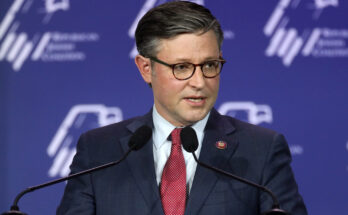by Dan Darling, International Military Markets Analyst, Forecast International.
Norway’s center-right, government-led Ministry of Defense unveiled the country’s latest long-term defense plan (titled “Capable and Sustainable”) on June 17. The new LTDP follows the previous iteration published in 2012 by the former Red-Green (center-left) government of Prime Minister Jens Stoltenberg, which drafted the plan during a period when the greater European security environment had yet to be upset by Russia’s annexation of Crimea and further destabilization activities in eastern Ukraine.
The latest LTDP makes specific note of the decline in the international security situation since the previous report was released. It seeks foremost to strengthen Norway’s ability to conduct crisis management, improve readiness levels and combat power, and increase the allied presence in Norway and interoperability with fellow NATO members. The ongoing modernization of Russia’s conventional forces has caught the attention of Norway’s security planners, who while not depicting Russia as a military threat to Norway, nonetheless view the stronger Russian military and Moscow’s willingness to utilize it as a foreign policy tool as a crucial factor in Norwegian defense planning.
Another issue confronting defense planners has been the rise in materiel costs associated with newer, more capable equipment. Despite efforts to approach hardware acquisition via NATO’s “Smart Defense” mode of cooperation and through cheaper, off-the-shelf purchasing, the high cost of advanced platforms requires factoring for defense inflation in long-term planning. As such, the Norwegian government recommends providing an additional NOK165 billion ($19.9 billion) in funding for the armed forces over the coming 20-year period. This includes a gradual increase in the defense budget over the ensuing four years that would bring the total allocation up by NOK7.2 billion ($870 million). More specifically, the defense budget would rise from the current NOK49.07 billion ($5.93 billion) earmark to NOK56.09 billion ($6.78 billion) by 2020.
With this increased funding, the Norwegian armed forces will receive improved capabilities, including 52 new-generation F-35A stealth fighters that will serve as the successor combat aircraft to the current fleet of F-16s. A joint buy of A330 multirole tanker transports with Poland will provide for an aerial refueling capability. Other force improvements on the horizon include the replacement of the six P-3 Orion maritime patrol aircraft and the acquisition of new long-range air defense systems to complement the medium-range National Advanced Surface-to-Air Missile System (NASAMS) II, which will also undergo an enhancement to extend the range of its missiles.
Finally, the much-anticipated Project 6346 Ny Ubat (New Submarine) program to replace the Royal Norwegian Navy’s six Ula class submarines with four new-generation types in the latter half of the next decade will – subject to parliamentary approval – begin to get underway.
Going forward, a government-commissioned land power study will be undertaken to best determine the future priorities, mission types, and preferable structure and weapons systems of the Norwegian Army.
The new LTDP builds on its predecessor by acknowledging the shifting security environment and, while continuing to emphasize that Russia does not constitute a direct military threat to Norway, characterizes Russian actions across the European perimeter as a downstream influence shaping the larger defense-planning map. The premium placed on retaining a well-trained, operationally sound, and full-spectrum military also recognizes the need for finding efficiency savings elsewhere, such as the rationalization of the military basing structure. Under the LTDP, a total of 11 facilities will be closed.
The hard part may come in getting the legislature to pass the minority government’s defense plan. There will likely be compromises made along the way, particularly on the funding side. Despite provisions to meet the long-term funding request by Chief of Defense Haakon Bruun-Hanssen for 92 percent of the NOK180 billion sought, that percentage could shrink following parliamentary deliberation. Basing closures could also come under scrutiny due to resistance on the part of locals to losing jobs and revenue streams. But, by and large, the latest defense plan presents little in the way of controversy or overreach that – financing aside – could result in sharp, acrimonious debate in Norway’s Storting (Parliament).
Please feel free to use this content with Forecast International and analyst attributions, along with a link to the article. Contact Ray Peterson at +1 (203) 426-0800 or via email at ray.peterson@forecast1.com for additional analysis.
The Forecast International International Military Markets series examines the military capabilities, equipment requirements, and force structures inventories of 140 countries, with corresponding coverage of the political and economic trends shaping the defense market outlook for individual countries and regions.
For 50 years, Forecast International intelligence reports have been the aerospace and defense industry standard for accurate research, analysis, and projections. Our experienced analysts compile, evaluate, and present accurate data for decision makers. FI's market research reports offer concise analysis of individual programs and identify market opportunities. Each report includes a program overview, detailed statistics, recent developments and a competitive analysis, culminating in production forecasts spanning 10 or 15 years. Let our market intelligence reports be a key part of reducing uncertainties and mastering your specific market and its growth potential. Find out more at www.forecastinternational.com




